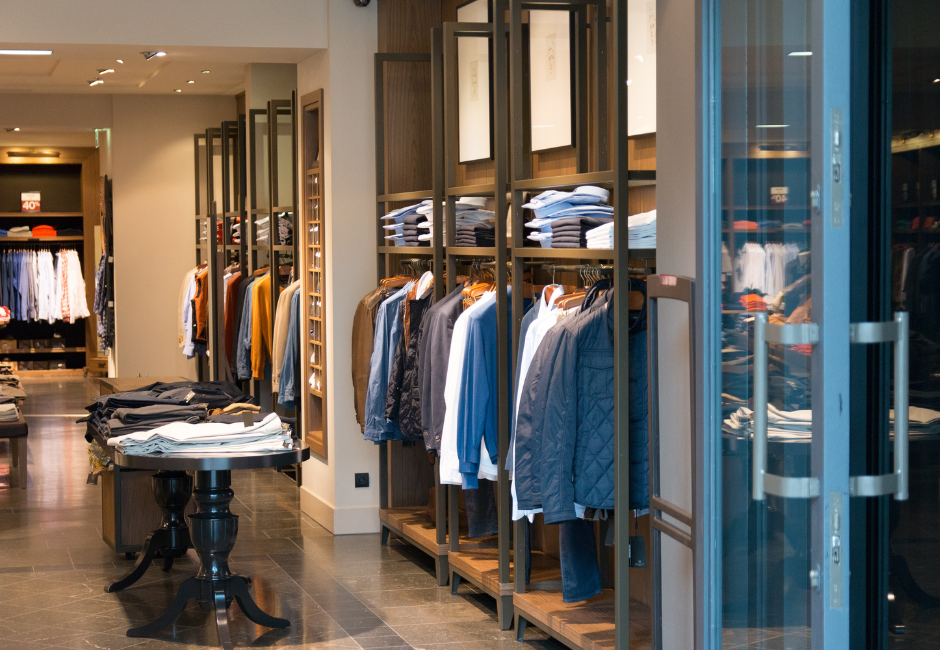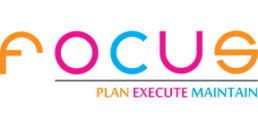A retail fitout refers to the process of designing and constructing the interior space of a retail store. It involves creating a layout that maximizes the use of space, enhances the shopping experience, and appealingly showcases the products. A well-designed retail fitout can significantly impact a business, attracting customers, increasing sales, and creating a memorable brand image. In this article, we will explore what is a retail fitout, the importance of retail fitouts, the key elements involved, the different types of fitouts, the design process, important considerations, the benefits of hiring professionals, examples of successful fitouts, and the latest trends in the industry.

Importance of Retail Fitouts for Businesses
Retail fitouts play a crucial role in the success of any retail business. An attractive and functional interior design can greatly influence the customer’s perception of the brand and their overall shopping experience. A well-designed retail fitout can create a positive first impression, making customers more likely to enter the store and explore the products on offer. It also helps in guiding customers through the space, optimizing the flow of foot traffic, and increasing the chances of making a sale.
Furthermore, retail fitouts provide an opportunity for businesses to showcase their brand identity and create a unique shopping environment. The design elements, such as lighting, colors, materials, and signage, can be carefully tailored to reflect the brand’s personality and values. This helps in establishing a strong brand image and building customer loyalty. Additionally, a thoughtfully designed fitout can enhance the functionality of the space, ensuring that it is well-organized and efficient for both customers and staff.

What is a Retail Fitout: The Elements
A retail fitout typically consists of several key elements that work together to create a cohesive and visually appealing space. These elements include:
- Layout and Space Planning
The layout of a retail store is a fundamental element of its fitout. It involves determining the placement of different areas, such as the entrance, checkout counter, product displays, and fitting rooms. The layout should be designed to optimize traffic flow, minimize congestion, and create a logical and intuitive shopping experience.
Space planning is another crucial aspect of a retail fitout. It involves determining the allocation of space for different functions and areas within the store. This includes considering factors such as the size of the store, the type of products being sold, and the target audience. Effective space planning ensures that the store has enough room for customers to move around comfortably and for products to be displayed attractively.
- Lighting
Lighting plays a vital role in setting the mood and atmosphere of a retail store. It can highlight products, create focal points, and evoke certain emotions. Different types of lighting, such as ambient, task, and accent lighting, can be used strategically to draw attention to specific areas or products. In addition, well-planned lighting can enhance the overall visual appeal of the store and make it more inviting for customers.
- Fixtures and Displays
Fixtures and displays are essential components of a retail fitout as they provide the means to showcase products effectively. These include shelves, racks, mannequins, and display cases. The choice of fixtures and displays should align with the brand’s aesthetic and the type of products being sold. They should be arranged in a way that is visually appealing and allows for easy browsing and access.
Benefits of Hiring Adelaide Shopfitters for Store Renovations
When it comes to store renovations, partnering with a professional shopfitting company like Adelaide Shopfitters can make all the difference. With their expertise and experience, they can transform a store into a visually stunning and highly functional space.
Shopfitters in Adelaide understand the intricacies of retail design and can provide valuable insights into maximizing the potential of a shop. From concept development to project management, they guide store owners through every step of the renovation process.
Additionally, Adelaide Shopfitters have access to a network of skilled tradespeople and suppliers, ensuring that the renovation is completed to the highest standards. Their attention to detail and commitment to quality result in a finished product that exceeds expectations.
By hiring Adelaide Shopfitters, store owners can save time and effort. They can focus on running their business while leaving the renovation process in the hands of professionals.
Types of Retail Fitouts
There are various types of retail fitouts, each suited to different types of businesses and customer needs. Some common types include:
- Boutique Fitouts
Boutique fitouts are primarily used by small, specialized stores that offer niche products or services. These fitouts emphasize creating an intimate and personalized shopping experience. Boutique fitouts often feature unique and stylish design elements, premium materials, and carefully curated product displays.
- Department Store Fitouts
Department store fitouts are designed for larger retail establishments that offer a wide range of products across different categories. These fitouts usually involve multiple departments, each with its unique design and layout. Department store fitouts often have a more spacious and open feel, with clear signage and wayfinding to guide customers through the various sections.
- Pop-up Store Fitouts
Pop-up store fitouts are temporary setups that are designed to be set up and dismantled quickly. These fitouts are commonly used by retailers for short-term promotions, seasonal events, or to test new markets. Pop-up store fitouts are often highly creative and flexible, allowing businesses to create a unique and engaging shopping experience in a limited timeframe.

Process of Designing a Retail Fitout
The design process for a retail fitout typically follows a series of steps to ensure a successful outcome. These steps include:
- Briefing and Concept Development: The first step involves understanding the client’s requirements, brand identity, and target audience. This is followed by developing a concept that aligns with the client’s vision and objectives.
- Space Planning and Layout Design: The next step involves analyzing the available space and developing a layout that optimizes the use of space and ensures a smooth flow of traffic. This includes determining the placement of different areas, such as the entrance, product displays, and checkout counter.
- Material and Finish Selection: Once the layout is finalized, the next step is to select the appropriate materials and finishes for the fitout. This includes choosing flooring, wall treatments, lighting fixtures, and other design elements that align with the brand’s aesthetic and budget.
- Fixture and Display Design: The design of fixtures and displays is a critical aspect of a retail fitout. This step involves designing custom fixtures or selecting pre-existing ones that complement the overall design concept. The fixtures and displays should be functional, visually appealing, and highlight the products effectively.
- Installation and Execution: The final step involves the actual construction and installation of the fitout. This includes coordinating with contractors, overseeing the construction process, and ensuring that the fitout is completed according to the design specifications and timeline.
What is a Retail Fitout: Key Considerations for Success
Designing and implementing a successful retail fitout requires careful consideration of various factors. Some key considerations include:
- Target Audience and Brand Identity
Understanding the target audience and the brand’s identity is essential in creating a fitout that resonates with customers. The fitout should reflect the brand’s values, its aesthetics, and appeal to the intended customer base. By considering the target audience’s preferences, the fitout can be tailored to create a memorable shopping experience.
- Functionality and Efficiency
A well-designed fitout should prioritize functionality and efficiency. The layout should optimize the use of space, ensure easy navigation for customers, and facilitate smooth operations for staff. Practical considerations, such as storage space, checkout counter placement, and fitting rooms, should be carefully planned to enhance the overall functionality of the store.
- Flexibility and Adaptability
Retail trends and customer preferences are constantly evolving. To ensure long-term success, a retail fitout should be designed with flexibility and adaptability in mind. This includes considering future changes and the potential for reconfiguring the space to accommodate new products or services. Incorporating modular fixtures and displays can provide flexibility and allow for easy updates as needed.
Benefits of Hiring a Professional for Your Retail Fitout
While it may be tempting to undertake a retail fitout independently, hiring a professional in Australia is highly recommended. Here are some benefits of working with a professional fitout company:
- Expertise and Experience: Professionals have the knowledge and experience to design and execute successful fitouts. They understand the latest trends, best practices, and industry standards, ensuring that the fitout meets high-quality standards.
- Cost and Time Efficiency: Professionals can efficiently manage the fitout process, saving time and reducing costs. They have established relationships with suppliers and contractors, allowing for better pricing and timely completion of the project.
- Customized Solutions: Professionals can provide tailored solutions that align with the specific needs and objectives of the business. They can create unique designs that reflect the brand’s identity and create a memorable shopping experience.
Examples of Successful Retail Fitouts
To gain inspiration and insight into successful retail fitouts, here are a few examples:
- Apple Stores: Apple stores are known for their sleek and minimalist design, which allows the products to take center stage. The use of glass, clean lines, and open spaces creates a modern and inviting atmosphere, reflecting the brand’s commitment to innovation.
- Nike Flagship Stores: Nike’s flagship stores are designed to create an immersive brand experience. They often feature interactive elements, digital displays, and dynamic lighting to showcase the brand’s products and athletic culture.
- MUJI: MUJI stores are known for their simplicity and focus on functionality. The fitouts feature natural materials, neutral colors, and flexible displays that allow customers to interact with the products and experience the brand’s philosophy of simplicity and sustainability.
Retail Fitout Trends to Watch Out For
The retail fitout industry is constantly evolving, and it is important to stay updated with the latest trends. Here are some trends to watch out for:
- Biophilic Design: Biophilic design involves incorporating elements of nature into the fitout, such as plants, natural materials, and natural light. This trend aims to create a connection with nature, promoting well-being and a sense of calm.
- Technology Integration: Technology plays an increasingly important role in retail fitouts. This includes interactive displays, augmented reality, and mobile payment solutions. Integrating technology can enhance the shopping experience and create a seamless and convenient environment for customers.
- Sustainability: With the growing emphasis on sustainability, many retail fitouts are incorporating eco-friendly materials, energy-efficient lighting, and recycling systems. This trend not only aligns with consumer values but also contributes to the overall sustainability goals of the business.

The Impact of a Well-Designed Retail Fitout
A well-designed retail fitout is a crucial factor in the success of a retail business. It can attract customers, increase sales, and create a memorable brand image. By considering the target audience, brand identity, and key design elements, businesses can create fitouts that enhance the shopping experience and reflect their unique personality. Hiring a professional fitout company can provide expertise, save time and costs, and ensure a successful outcome. By staying updated with the latest trends, businesses can continue to adapt and create fitouts that meet the evolving needs and preferences of customers.
